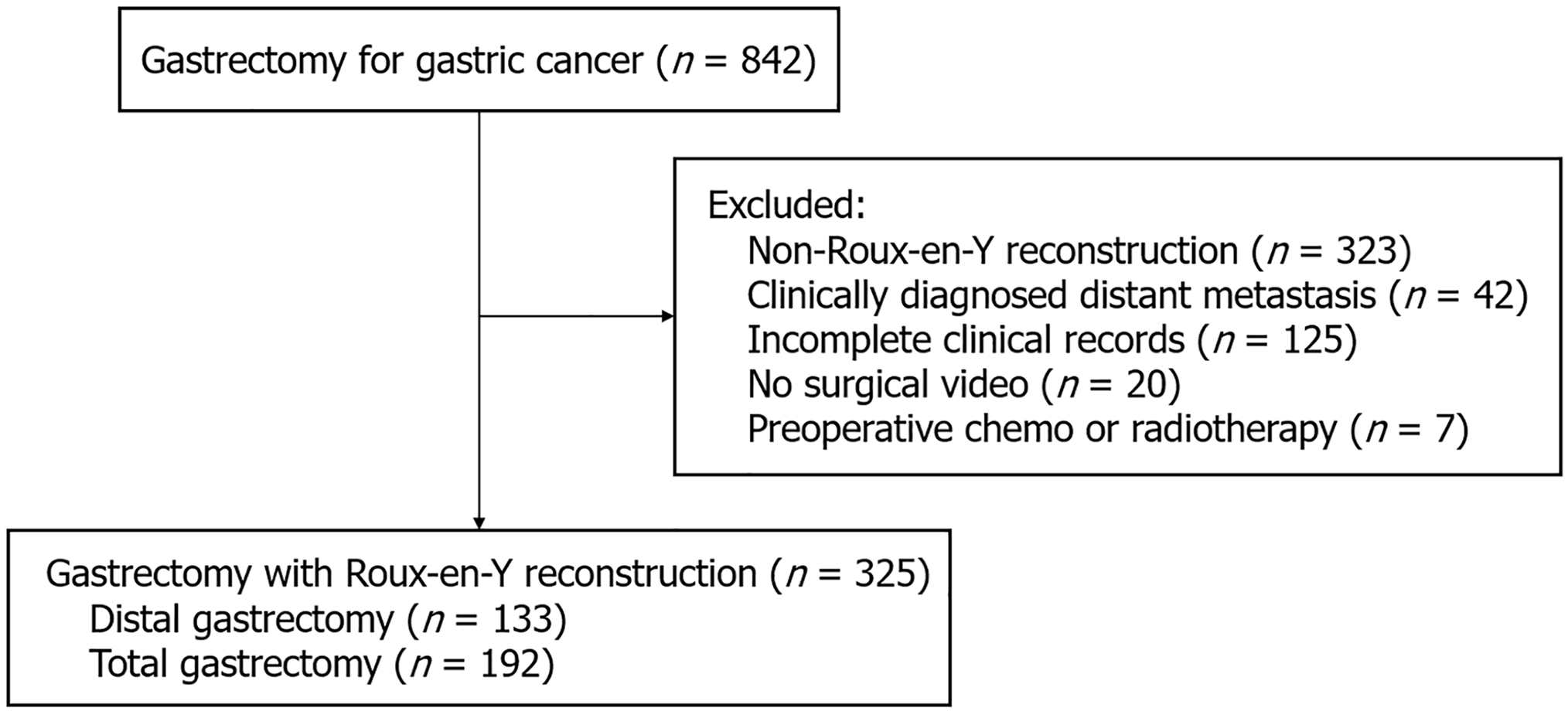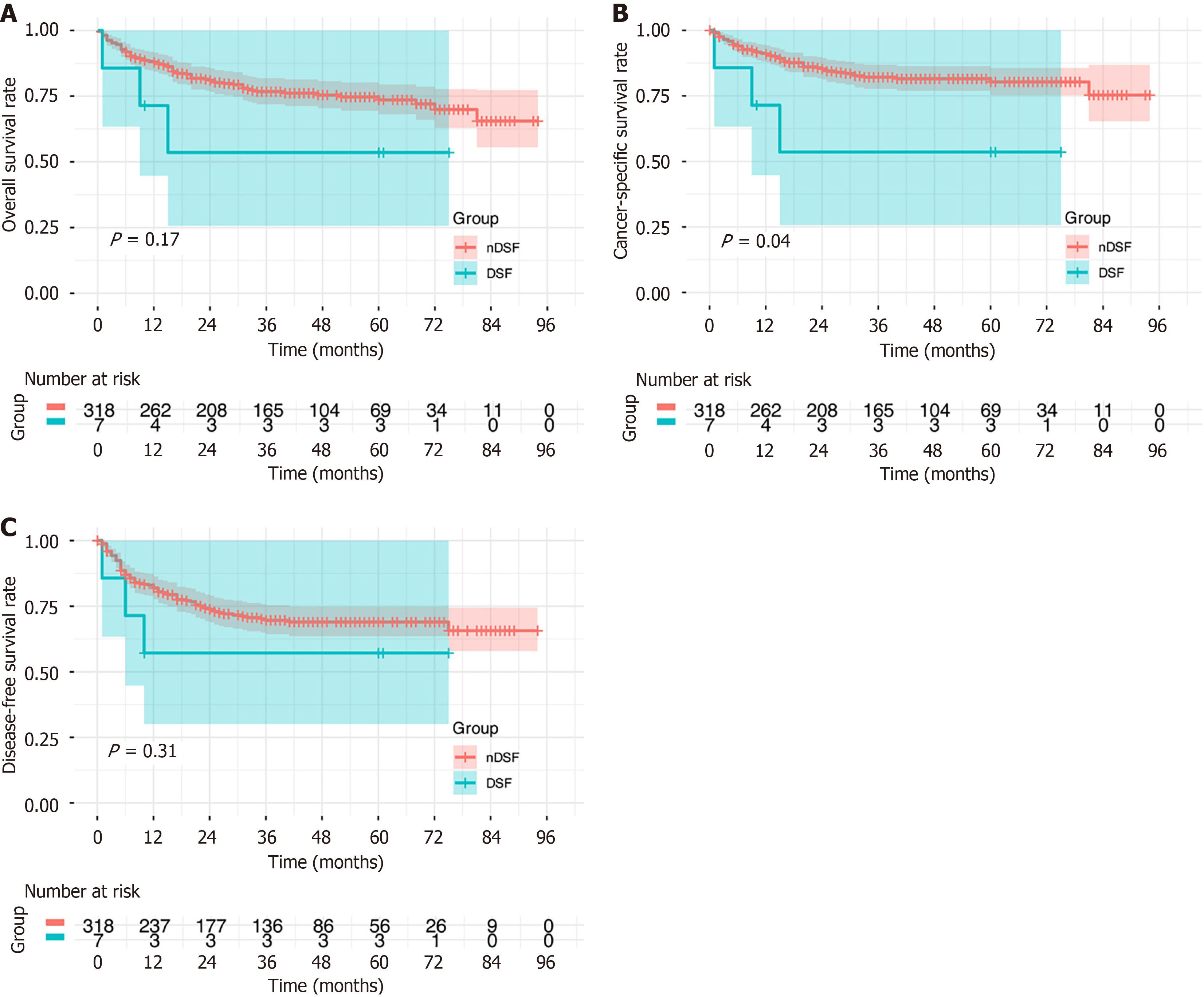Copyright
©The Author(s) 2025.
World J Gastrointest Surg. Jun 27, 2025; 17(6): 104333
Published online Jun 27, 2025. doi: 10.4240/wjgs.v17.i6.104333
Published online Jun 27, 2025. doi: 10.4240/wjgs.v17.i6.104333
Figure 1 Flowchart of patient selection.
Figure 2 Intraoperative images of the duodenal stump and suturing fixation of the stump to the jejunal sidewall.
A: Initiation of the suturing process to embed the remnant stump with barbed suture; B: Complete embedding of the remnant stump following continuous suturing; C: Suturing fixation of the remnant stump with the jejunal lateral wall (Roux limb); D: Tightening of the sutures to finalize the procedure. Confirm that the entire Roux leg fixed to the duodenum from the esophagus or stomach and jejunal anastomosis is not under excessive tension and that no abnormalities are present in the subsequent placement of the intestinal tract in the Y leg.
Figure 3 The nomogram for predicting duodenal stump fistula.
OVF: Obstructive ventilatory failure; DSF: Duodenal stump fistula.
Figure 4 Evaluation of the nomogram’s predictive performance.
A: Receiver operating characteristic curve; B: Calibration curve; C: Decision curve analysis curve. AUC: Area under the curve.
Figure 5 Survival analysis based on competitive risk model.
A: Overall survival; B: Cancer-specific survival; C: Disease-free survival.
- Citation: Yu Y, Yamauchi S, Kaji S, Yube Y, Nasu M, Yoshimoto Y, Cheng M, Ozaki A, Watanabe T, Orita H, Ecoff K, Nojiri S, Mine S, Wu YY, Fukunaga T. Predictive model and prognostic insights into duodenal stump fistula following radical gastrectomy with Roux-en-Y reconstruction for gastric cancer. World J Gastrointest Surg 2025; 17(6): 104333
- URL: https://www.wjgnet.com/1948-9366/full/v17/i6/104333.htm
- DOI: https://dx.doi.org/10.4240/wjgs.v17.i6.104333













